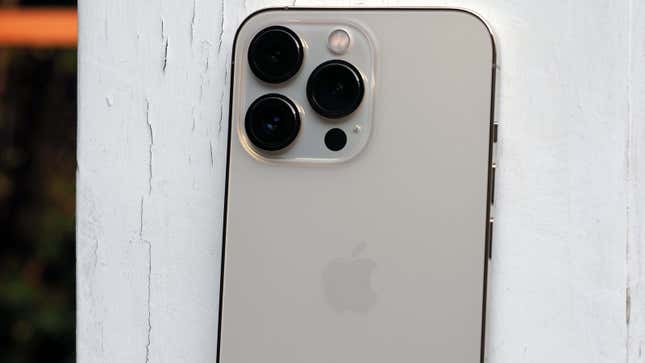
Apple reportedly wants to replace the iPhone with augmented reality glasses in 10 years, a transition that would fundamentally change the way we interact with the digital world. Before you get excited about becoming Tony Stark, we should caution that these ambitions border on fanciful.
Let’s start with some background. In a recent note to investors, analyst Ming-Chi Kuo (via MacRumors), who is oft-cited for his accurate insider info on all things Apple, claims the Cupertino tech company will launch a head-mounted device sometime next year, marking the first step in a 10-year process toward abandoning the smartphone in favor of AR.
The first device will reportedly be a standalone AR headset that operates without needing to be connected to a Mac or iPhone. Developer support could decide the success of Apple’s first standalone AR effort, and Kuo says the device will already support a “comprehensive range of applications.” Kuo previously predicted a roadmap with three phases: a helmet-type headset in 2022, glasses by 2025, and contact lenses by 2030-2040.
As a quick reminder, AR differs from VR in that AR overlays digital objects onto a real-world setting whereas VR replaces that setting entirely with a fictional realm.
Apple’s plans to build a standalone AR headset come as no surprise. The company is bullish about AR, with Apple CEO Tim Cook telling YouTube creator Justine Ezarik (who goes by iJustine): “I am so excited about AR. I think AR is one of these very few profound technologies that we will look back on one day and went, how did we live our lives without it?”

While Apple has yet to release a standalone AR product, the company has baked various mixed reality features (like a LiDAR camera) into its iPhones and iPads after launching ARKit, a virtual reality platform that uses sensor data to map objects in 3D space to make it easier for people to craft AR-based apps.
Nonetheless, if Kuo’s report is accurate, then Apple’s plans are bold. iPhone sales account for more than half of the company’s total revenues, hitting $38.9 billion for fiscal Q4 2021. As such, Apple would only kill the iPhone once the transition to AR is close to completion. As it stands, AR has narrow use cases and remains confined to a few popular apps (Pokémon Go being the most notable) and as a useful tool in the workplace.
Apple must also contend with AR’s shaky past. Its most famous emergence into the mainstream came by way of Apple’s greatest rival in Google Glass. Seen by some as a sci-fi gadget for the future, Google Glass failed because people feared they would be recorded at any time without permission. Google abandoned plans to sell the glasses to the public and settled on selling them to businesses.
If patents are any indication, Apple is already experimenting with ways to protect user privacy. One way would be to make the camera module removable so those nearby know if they are being filmed. This could get around the same restrictions that banned Google Glass from public venues, like bars and theaters.
Privacy aside, modern AR glasses and headsets suffer from a long list of drawbacks. Those with advanced computer vision require powerful processing, which adds weight and cost. Microsoft’s Hololens, a mixed-reality headset, is one of them, retailing for a whopping $3,500. Lenovo’s $1,500 ThinkReality A3 also belongs in this category and is geared toward the enterprise. Other options lumped into the smart glasses category, like the Bose Frames and Amazon Echo Frames, don’t even use visual AR.
Apple has thrown around some interesting ways to resolve these technical hurdles. In a recent patent, the company describes using an “adjustable opacity layer” to control lens transparency so digital overlays would be easier to see in bright conditions. This could potentially solve a problem we ran into with the now-defunct Focals by North. Then there is the question of how we will interact with the AR world. Apple’s answer? Haptic socks, or rather, what Apple calls a “foot-wearable support structure.”
Even if Apple releases a viable product, it would still need to address public skepticism related to privacy and safety concerns surrounding face-worn cameras–the same concerns we have with Facebook’s Ray-Ban Stories. It would also need to educate people on how to use AR, convince them of its use cases, and rally developers to port their apps to its AR platform.
This is all to say that Apple’s plans involve taking a monumental leap in a short timeframe. While the tech giant has proven its ability to popularize new product categories (tablets, music players, and smartphones), 10 years doesn’t seem like enough time to bring a relatively new (and advanced) technology from relative infancy to replacing a product owned by more than 40% of Americans.
If earlier devices released in the build-up to this iPhone-killing AR product fail then these ambitious plans could end up in the same bin as AirPower. But even if early models are successful, I don’t see a timeline where the iPhone’s life expectancy is shortened to a decade. Whenever new technology arrives, there is typically a long adoption period. I suspect Apple’s AR glasses will be, at best, in that phase come 2031.